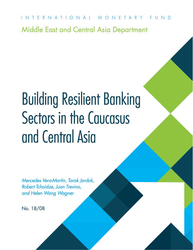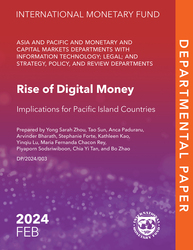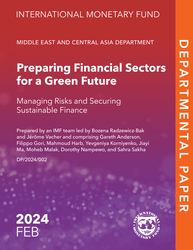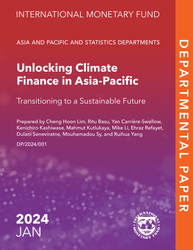
Building Resilient Banking Sectors in the Caucasus and Central Asia
External shocks since 2014, have put financial sectors, mainly banks, in the eight Caucasus and Central Asia countries under increased stress.
READ MORE...
Volume/Issue:
Volume 2018
Issue 010
Publication date: July 2018
ISBN: 9781484360774
$20.00
Add to Cart by clicking price of the language and format you'd like to purchase
Available Languages and Formats
| English |
Prices in red indicate formats that are not yet available but are forthcoming.
Topics covered in this book
This title contains information about the following subjects.
Click on a subject if you would like to see other titles with the same subjects.
Banks and Banking , Money and Monetary Policy , DPPP , DP , bank , banking sector , central bank , nonperforming loan , bank management , CCA country , nonviable bank , diversification strategy , bank nationalization , problem bank , public funds , bank corporate governance , Nonperforming loans , Bank resolution framework , Credit , Commercial banks , Loans , Global , Central Asia and the Caucasus
Also of interest
Summary
External shocks since 2014—lower oil prices and slower growth in key trading partners—have put financial sectors, mainly banks, in the eight Caucasus and Central Asia (CCA) countries under increased stress. Even before the shocks, CCA banking sectors were not at full strength. Asset quality was generally weak, due in part to shortcomings in regulation, supervision, and governance. The economies were highly dollarized. Business practices were affected by lack of competition and, in most countries, connected lending, which undermined banking sector health. Shortcomings in financial regulation and supervision allowed the unsound banking practices to remain unaddressed. The external shocks exacerbated in these underlying vulnerabilities. Strains in CCA banking sectors intensified as liquidity tightened, asset quality deteriorated, and banks became undercapitalized. These challenges have required public intervention in some cases.
Copyright © 2010 - 2024
Powered by:
AIDC



